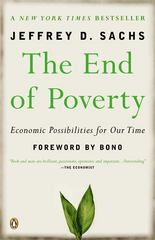4of5 11. Suppose that apples were the only good produced in the United States and Mexico. In Mexico, apples sell for 12 pesos apiece. In the Unites states, apples sell for $0.50 apiece. a. According to the theory of Purchasing Power Parity, what is the equilibrium nominal exchange rate between the US. dollar and the Mexican peso? What would the real exchange rate between the U.S. and Mexico in that case? b. Supposethe price of apples rises at a rate of 3% per year in the U.S., but at a rate of 12% per year in Mexico. According to PPP, by how much should we expect the nominal U.S dollar/Mexican peso exchange rate to change in the course of 1 year (up, or down, and by what 96)? c. Starting at the exchange rate you calculated in (a), and assuming the rates of inflation remain the same as in {b}, what nominal exchange rate would you expect in 3 years? 12. What is "arbitrage\" {in goods)? Why don't arbitrage opportunities last? 13. Suppose the Federal Reserve increases the U.S. money supply in an effort to prevent the U.S. economy from slipping further into recession. a. According to the Quantity Theory of Money, what will the increased money supply do to the price of goods in the United States in the long run, all else equal? b. According the theory of PPP, what will happen to the exchange value of the U.S. dollar as a result, all else equal? In particular, would you expect the dollar to appreciate or depreciate against foreign currencies? c. According to PPP, what will happen to the real cost paid by foreigners for U.S. products? 14. According to the Keynesian Cross model of income, how would each of the following shocks affect a nation's real aggregate income {Y} in the short run, all else equal? Foreach shack, be sure to clearly state a predicted direction of change for income, illustrate your prediction with a Keynesian Crass Diagram, and explain your predictions intuitively in words. a. Government purchases decline b. Congress cuts household income taxes c. Autonomous consumption increases d. Total factor productivity increases 15. According tothe Keynesian model of income determination, what determines a nation's real aggregate income? According to the classical model of income determination, what determines a nation's real aggregate income? Why do the models give different answers to the question, and can they both be right







